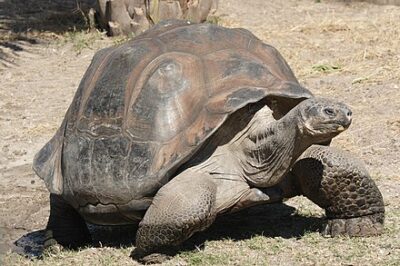
Endangered Galapagos Tortoises Hatch At Philly Zoo for the First Time in 150 Years
The Philadelphia Zoo has announced the birth of four Galapagos tortoise hatchlings, a historic first in the institution’s 150-year existence. This extraordinary development is not only a triumph for zoological conservation efforts but also a heartwarming reminder of the wonders of Hashem’s creations, many of which continue to inspire awe and admiration even in our technologically advanced generation.
The hatchlings, each weighing around 70 to 80 grams—roughly the weight of a large egg—emerged from their shells beginning February 27. They are currently being cared for in the zoo’s Reptile and Amphibian House under close supervision by the animal care team. Additional eggs remain under observation, and staff remain hopeful that more hatchlings may emerge in the coming weeks.
The proud parents of the new arrivals, affectionately named “Mommy” and “Abrazzo,” are Western Santa Cruz Galapagos tortoises, a species listed as critically endangered. Both tortoises are nearing 100 years of age, an age considered mature yet still vibrant for this long-lived species. In fact, tortoises of this kind are known to live well over a century, a trait that has long fascinated both scientists and Torah observers alike, given the Torah’s emphasis on the value of longevity and continuity through generations.
Mommy, in particular, holds a special place within the zoo’s history and the broader conservation community. She has lived at the Philadelphia Zoo since 1932, making her one of its longest-standing residents. According to the Association of Zoos and Aquariums (AZA), she is now the oldest recorded first-time mother of her species—a unique distinction that underscores the patience and persistence required in both nature and conservation.
Zoo President and CEO Jo-Elle Mogerman expressed great excitement over the successful hatching, calling it a milestone not only for the zoo but for conservation efforts worldwide. “This event represents hope for the survival of a species facing tremendous challenges in the wild,” she stated. “It is also a testament to the careful planning and expertise of our animal care and veterinary teams.”
Indeed, in the wild, Galapagos tortoises have faced numerous threats, including habitat destruction, competition with invasive species, and poaching. Once roaming in great numbers across the Galapagos Islands, their population has been significantly reduced. Conservation programs around the globe, including those coordinated by the AZA’s Species Survival Plan, have been working diligently to preserve these gentle giants for future generations. The successful hatching in Philadelphia is a tangible result of these dedicated efforts.
The birth of these hatchlings also offers a rare educational opportunity. The zoo plans to introduce the baby tortoises to the public on April 23 and is inviting the community to participate in a naming contest. While such contests are often used to engage the public, they also serve the important purpose of raising awareness about the delicate balance of ecosystems and the responsibility mankind bears to act as stewards over the animal kingdom.
This event serves as a reminder of mankind’s responsibility in the safeguarding of the natural world. While the Torah permits the use of animals for human benefit, it also places clear obligations upon us to treat animals with compassion and to avoid unnecessary harm. The mitzvah of tzaar baalei chayim—preventing suffering to living creatures—is a foundational principle in halacha, and efforts to preserve endangered species align with this value in a profound way.
Interestingly, the Galapagos tortoise, native to the distant archipelago off the coast of South America, became known to the world through the voyages of early explorers. However, their enduring survival now depends not on conquest, but on cooperation and care—principles deeply embedded in Torah ethics. That such an ancient species finds new life in the heart of Pennsylvania, through the efforts of human beings acting with responsibility and foresight, is a remarkable turnaround in the narrative of these majestic animals.
As the Philadelphia Zoo celebrates this historic milestone, we are reminded that even in a world that often seems dominated by fast-paced progress and fleeting digital trends, the slow and steady tortoise—quiet, deliberate, and ancient—still has much to teach us. In the merit of our efforts to protect and care for Hashem’s creatures, may we continue to merit witnessing the beauty of creation unfolding in our midst.